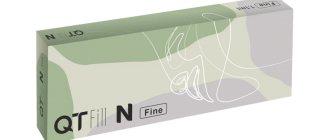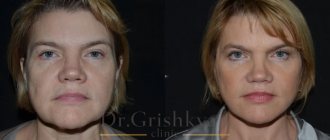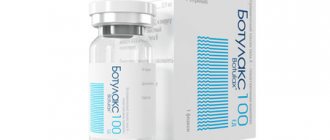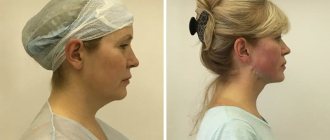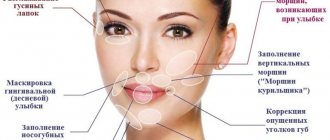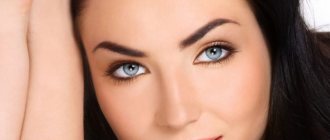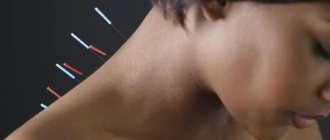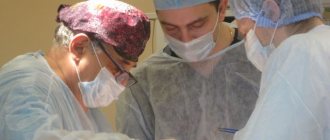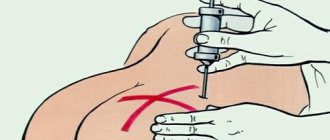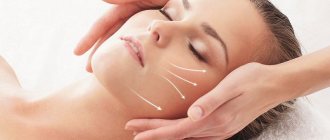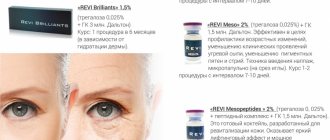Intradermal fillers based on hyaluronic acid (Shiseido, Japan) are produced using a multi-stage patented technology high-density tapping process (h-DTP) from cross-linked hyaluronic acid microgranules without additives. The gel manufacturing process achieves increased viscoelasticity through physical cross-linking, ensuring the final product is completely free of toxins. It is primarily a safe, highly elastic and cohesive filler. This product is evenly distributed in tissues, shows excellent hydrophilicity, has increased plasticity, volumization and is completely destroyed by hyaluronidase.
Characteristics of QT Fill intradermal fillers
| Volume | 1.1 ml | 1.1 ml | 1.1 ml |
| Compound | Hyaluronic acid 100% Cross-linked | Hyaluronic acid 100% Cross-linked | Hyaluronic acid 100% Cross-linked |
| Concentration | 24mg/ml | 24mg/ml | 24mg/ml |
| Indications | Correction of the superficial and middle layers of the dermis. Surface static wrinkles, reinforcement. | Correction of the middle and deep layers of the dermis, volumization. To fill in areas of minus fabric. | Correction of deep thicknesses, volumetric modeling. Injected into the hypodermis, supraperiostally. |
| Viscosity | 100-200 pa-s | 200-300 pa-s | 300-500 pa-s |
| Biodegradation period | 3-6 months | 6-12 months | More than 12 months |
Age-related changes are most noticeable in the area of the lower third of the face: drooping of the corners of the mouth, nasolabial folds, the formation of purse-string wrinkles and “puppet” wrinkles, loss of clarity of the oval of the face.
The task of modern medical cosmetology is to start preventing age-related changes as early as possible in order to preserve youth, beauty and health longer.
Young age according to WHO – ranges from 25 to 44 years. Today, there are more and more such patients visiting a cosmetologist. And that is great! At this age, it is easy to prevent age-related changes.
Patients in this category belong to the generation of skeptics who question many things, so the task of a cosmetologist is to correctly substantiate his work.
Such patients follow innovations and want to look good not only in life, but also on social networks (in full face, in profile and half-profile). They are often wealthy and independent, busy and multitasking, ready for several procedures in one session. The quality of the product, attention and professional approach are very important to them.
It is worth noting that the needs of patients change over time. If 5-7 years ago the emphasis was mainly on the lips, then on the cheekbones, today the trend is on the lower third of the face (a clear oval of the face).
Previously, an oval face (or a diamond-shaped face) was considered the most beautiful and photogenic; today, a more elongated lower third of the face (particularly due to the chin) is considered videogenic.
What parameters will we use when harmonizing and beautifying the lower third of the face?
Who is contraindicated for contour plastic surgery?
Despite the ubiquity of the service, its use is considered a serious intervention in the human body. In this regard, the procedure is contraindicated in patients:
- with blood diseases that reduce blood clotting;
- with skin diseases;
- with diseases of the autoimmune system;
- pregnant and nursing mothers;
- who have undergone a recent course of chemical peeling, etc.
Contour plastic surgery in modern conditions is a completely safe procedure for the health and well-being of patients. The best result of facial contouring will be provided by a competent specialist - a professional cosmetologist at the Unimed-S clinic in the South-Western Administrative District of Moscow, who will select the right drug and carry out a high-quality injection, following the technology.
Patient profile analysis
CC Steiner (1962) proposed studying the position of the lips relative to the line (S-line) connecting the middle of the S-curve formed by the contour of the nose and upper lip with the cutaneous point pg. He assessed the position of the lips in two positions, namely the lips in front or behind the aesthetic line.
RM Ricketts (1957) recommended determining the position of the lips relative to the aesthetic line (E-line). It is carried out through the most prominent points of the nose and soft tissue chin - point pg. With a harmoniously developed face, the lips are located behind this plane: the upper lip is 2–3 mm, the lower lip is 1–2 mm.
To study the position of the upper and lower lips on the soft tissue profile, S. J. Burston (1967) proposed using a B-line connecting the soft tissue points sn and pg. The author took linear measurements from the protruding points of the upper and lower lips perpendicular to this line. This line does not depend on the size of the nose, which continues to grow until the age of 27. According to S. J. Burston, the ratio of the lower lip to the upper is 2:1 in men and 2:3 in women. The upper lip should be located 3.5 ± 1.4 mm in front of this line, and the lower lip should be located 2.2 ± 1.6 mm in front of this line.
We restore beauty and youth - choose the injection method
Until recently, the intervention of a plastic surgeon was considered the only way to transform and rejuvenate the face. Since the mid-90s, cosmetology has reached a new level - an innovative injection method has appeared, the result of which is not inferior to the surgical one, and in some aspects even surpasses it:
- Possibility of performing the procedure on an outpatient basis;
- Low likelihood of injury;
- Minimum list of contraindications;
- Visible effect after a short time;
- Human connective tissues receive the necessary nourishment, provoking the natural process of producing their own collagen, which significantly slows down the aging process of facial skin;
- Low cost and availability of the service.
Full face
Let's note another popular request for beautiful lips - don't overdo it.
Lips should not make up more than 25% of the lower third of the face.
The upper lip should ideally correspond to 1/3 of the lower lip. The main volume of the drug is distributed in the center of the lips, corresponding to the line of projection of the wings of the nose.
It is worth paying attention to the shape of the face; square and trapezoidal shapes may not be suitable for correction of the angles of the lower jaw.
How the procedure works and what to do after it
At the first stage, preparation is carried out (cleansing of impurities, makeup removal). Then an anesthetic gel is applied to the area where the drug is administered, after which the injections themselves are made. The filler has a high density, and a syringe with a cannula is used to administer it. Its tip is blunt, rounded, and not sharp, like a regular needle - the cannula allows you to move apart the tissues without practically damaging them.
All manipulations will take no more than forty minutes. Immediately after the intervention, you can evaluate the result in the mirror and go about your business. No special recovery is required, but for several days you will need to take certain precautions:
- do not rub or damage your face (to avoid infection in puncture wounds):
- do not perform traumatic procedures (scrub, peeling);
- do not visit the beach, bathhouse or sauna, and do not stay in the open sun for a long time.
To sign up for the “Jolie Profile” procedure in Moscow, leave a request on our website or call us +7 (495) 636 - 29-30. Our cosmetology and dermatology clinic “BL” employs experienced estheticians who will help you acquire the desired face shape and visually rejuvenate it.
Clinical cases
Patient A., 35 years old
, turned to a cosmetologist with complaints about the fullness of her face. Please make your face more harmonious and elongated.
On examination, there is a lack of volume in the mental area.
A set of procedures consisting of several sessions was carried out, starting with procedures to improve skin quality. The final stage was a comprehensive volumization of the face.
- The angles of the lower jaw were corrected: QT FILL Sub Q – 3 ml.
- Chin: Sub Q – 1 ml.
- Cheek-zygomatic region: Sub Q – 2 ml.
- Lips: QT FILL Deep – 1 ml.
Before
After
Before
After
Patient B., 39 years old
. I asked to increase the volume of my lips.
The lips were corrected using the “Russian Lips” technique. In photo 3, during subsequent procedures, volume was added to the mental zone and to the projection of the mandibular ligament attachment. The patient noted the beauty of her face; her lips began to look harmonious and attractive.
Conclusion: it’s worth looking at the patient holistically; perhaps you shouldn’t start contouring with the lips.
The patient had 1 ml of QT FILL Deep injected into her lips twice with an interval of 2 weeks (2 ml in total).
In the submental area and in the projection of the mandibular ligament - 2 ml of the drug QT FILL Sub Q.
Before
After
After
Before
After
After
Patient S., 42 years old
. I complained about my double chin. On examination, there is a pronounced lack of volume in the mental area. By correcting this area using the drug QT FILL Sub Q (volume of 1 ml in two sessions with an interval of 10 days; 2 ml in total), we obtained a visual absence of a double chin. The patient stopped noticing him in the photograph as well. Additionally, lips were augmented with QT FILL Deep – 1 ml, thereby comprehensively beautifying the lower third of the face.
Before
After
Before
After
Patient D., 56 years old
. I went to a cosmetology clinic with complaints about sagging skin, the presence of jowls and nasolabial folds.
On examination, hypertrophy and drooping of the superficial fatty packets and atrophy of the deep fatty packets are noted. Ptosis of the soft tissues of the face.
During the process, complex facial volumization was carried out with thread correction in 2 stages.
The fillers used were QT FILL Sub Q – 4 ml in the cheek-zygomatic area, in the projection of the angles of the lower jaw, QT FILL Deep – 2 ml in the area of the nasolacrimal groove, nasolabial, labiomental fold.
This patient does not belong to the young age group, but the results obtained allow her to be included in this group.
Before
After
Before
After
Brief historical excursion
The first mention of contour plastic surgery appeared in the works of the German doctor Neuber back in 1893. Stunning success and recognition came to the author of the technique after he described in detail his actions of injecting fat droplets taken from the patient’s thighs, buttocks and abdominal area into problem areas of the face. A little later, instead of natural fat cells, they began to use synthetic paraffin, which negatively affected the quality and consequences of the procedure.
In the mid-20th century, specialists in facial contouring began to use silicone gel, after the introduction of which various side effects arose: the migration of synthetic filler throughout the body was accompanied by the appearance of granuloma and fibrosis.
Only in 1992 was a ban imposed on the use of silicone in aesthetic cosmetology in Europe and the USA.
